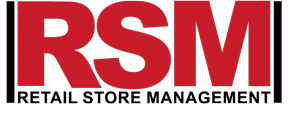
Customer retention rate is a key marketing performance metric for evaluating the effectiveness of your marketing strategy and associated campaign expenditures.
Marketing is a multibillion-dollar industry, consisting of both outbound (interruption marketing) and inbound (content marketing, social media marketing, SEO, etc marketing) is a leading generation, customer acquisition, and customer retention activities. Marketing efforts must be measurable to be effective in gaining the support of the C-suite. In an age, driven by Web 2.0 and cloud computing, business and marketing efforts and campaigns are now measurable using analytics software and tools. Available tools for measurement range from Excel Spreadsheets and formulas to Google analytics to bespoke software designed by or for companies large enough to afford the cost of customized apps. Marketers can now gather transaction data, analyze them, design business and marketing models with them, and quantitatively measure results. Writing for the Wall Street Journal, Professor John A. Quelch bluntly expressed the corporate board expectations from marketing executives that:
“Today’s boards want chief marketing officers who can speak the language of productivity and return on investment and are willing to be held accountable.”
In the 21stcentury’s hypercompetitive marketing business environment, you need data and not intuition, not faith, not opinion, but fact-based data for decision making in executing marketing campaigns, and for designing business models. This is where performance measurement using marketing metrics come in, and one of the key marketing performance metrics you will need to measure and monitor in addition to such other metrics like lead generation, conversion rate, is customer retention rate.
Customer Retention Rate (CRR): the number of customers you are able to convert to paying customers is important. However, this is only part of the story. Much more important is the net number of profitable customers you are able to retain as paying customers at the end of every measurement period, which could be monthly, quarterly or yearly. Retained customers who are profitable are the customers who keep you in business in the long haul, and your ability to calculate and monitor this number from one period to the next period is important. The concept of customer retention rate comes in as a valuable metric of the performance of both your products or services and the performance of your sales team.
In its simplest definition, customer retention rate is quantitatively the number of customers you have at the end of a period less the number of new customers you acquired within the same time period, divided by the number of customers you had at the beginning of the period under review, and preferably expressed as a percentage. In calculating your customer retention rate, you do not factor in the new customers you acquired within the period under review as you have not yet developed sustainable business relationships with them.
To calculate your customer retention rate, follow the logic in the example below:
- Suppose the number of customers you have at the end of the first quarter of a year (for instance, 31stof March)was 1,200 subscribers (or E1).
- And the number of new customers you acquired during the first quarter (January to March) was 200 subscribers (or E2).
- Also, let us assume that the number of customers you had at the beginning of the first quarter of the year (1stof January) was 1,100 subscribers (or E3).
- Therefore, the number of customers you were able to retain over the first quarter (January to March) was 1,200-200 = 1,000 subscribers (or E1-E2).
- Therefore, your customer retention rate for the quarter under review was:
(1,000/1,100 )*100%
or 90%.
The above steps for calculating your customer retention rate can be converted into a simple formula as follows:
CRR = ((E1-E2)/E3)*100
In other words, you were able to retain 90% of the customers you had at the beginning of the quarter. And in the course of the first quarter, you lost 100 subscribers or 10% of the number of subscribers you began the quarter with.
For digital businesses, a number of tools are available for tracking your customer retention rate. You must track the number of new customers who sign on for your services, the number of one-off purchases and the number of repeat purchases. Google Analytics is one effective tool that you can use for the purpose of managing your customer retention rate and it is free and easy to install software provided by Google for measuring and monitoring your KPIs. Other KPI vendors include but are not limited to IBM Cognos Analytics, ClicData, SAP Business Objects, and SAS Visual Analytics.
Your churn or attrition rate in the above example was 10%. Ideally, your goal should be to have a customer retention rate of 100% but this is rarely the case. Some customers will leave after one or a few transactions. Others may not renew their contractual relationship with your business for a number of reasons.
Customer Churn Rate or Attrition Rate: your customer churn rate or attrition rate is the reverse of your customer retention rate. It is the rate at which you are losing customers within a specific time, which could be measured monthly, quarterly or annually.
The measurement of churn rate is important for subscription-based companies like Internet Service Providers (ISP), insurance companies, and Software as a Service (SaaS) software vendors. There are two types of churn; namely voluntary and involuntary churns. A customer may voluntary churn because of unsatisfactory service, which may result in a customer switching from one service provider another. Involuntary churn may be as a result of death or relocation. There may be very little you can do about involuntary attrition or churn. However, there are many steps you can take to manage and reduce voluntary churns. They include overhauling and improving your service relationship with your customers. You may use analytic software to monitor your customer journey along the sales funnel. Some analytic software can predict the point at wish a customer is likely to show signs of being at risk of churning. By proactively focusing on customers who are at this stage, you may offer discounts and other incentives that may mitigate against churning. Your customer retention rate is closely tied to your recurring revenue rate.
Monthly Recurring Revenue (MRR): Your customer retention rate is your revenue generation rate. Suppose you have 10,000 subscribers to your CRM app and the monthly subscription cost per subscriber is $10, your Monthly Recurring Revenue (MRR) from your CRM software is $100,000. Suppose 1,000 subscribers opt-out or cancel their subscription (churn) within one month, again quantitatively your MRR for the month is $90,000. On the upside, if you had 10,000 subscribers at the beginning of a month and suppose you gained 1,000 new subscribers within the same month at $10 per subscription per quarter, in this case, your MRR curve shoots northward from $100,000 to $110,000 for the same period.
If you run an online business, one of the most important functions of your marketing team is to retain your current customers, grow your customer base by acquiring new customers, while at the same time, making efforts and implementing strategies directed at reducing your churn rate. To do this, you will require a marketing strategy whose main function will include nurturing and guiding your site visitors along the sales funnel from creating brand awareness through using, for instance a marketing campaign that may include Pay-Per-Click (PPC) ads, to lead creation by moving your site visitors from marketing qualified leads(MQLs) to sales qualified leads(SQLs), and then converting them to profitable customers. No matter how creative your brand awareness and lead generation strategies are if you cannot create, retain and increase the number or dollar value of your profitable customers, you will ultimately be heading for troubled times. According to a study conducted at Harvard Business school, it cost as much as five times to acquire a new customer than it cost to retain an existing customer. You must, therefore, craft a focused strategy directed at the basics of customer retention, and be able to analyze your customer retention rate, and put in place marketing plan for sustainable growth and profitability.
Retention rate strategies
Your customer retention rate strategy should be an integral part of your marketing strategy and the key driver in your choice of a competitive and sustainable strategy. In his seminal book, Competitive Advantage: Creating and Sustaining Superior Performance, Michael Porter advanced three generic strategies from which a firm should choose as the basis for competing in the marketplace. These generic strategies are namely: cost leadership, differentiation, and focus (cost focus and differentiation focus).
Cost leadership: this is a “no-frills” strategy where you eliminate all identifiable waste or frills along the value chain so that you can still charge your industry price and retain the savings. By passing some or all the cost-savings to your customers, competing on cost can be deployed as a key component of your customer retention strategy. However, this strategy has its risk of retaliation by your competitors who may match your price offer. To employ cost leadership as a strategy for customer retention, your organization must stay agile, nimble, and continuous improvement must be an integral part of your brand’s DNA. Take Ryanair for instance. Its fleet of aircraft of the same model (Boeing 737-800) so that it can order spare parts in bulk, and institute standardized maintenance protocol. The average age of its over 300 aircraft is 5.5 years, which is considered almost new in an industry with an average aircraft age of over 15 years. Its cost of maintenance is low by industry standard. Flights are booked online. There are no onboard free catering services. Its flights are between low traffic airports. Because its value proposition is low fare, it has a high customer retention rate. With a rigorous emphasis on cost-cutting, its difficult to compete against Ryanair in its market segment.
Differentiation: to use differentiation as a customer retention strategy, your brand must be packed with features, functionalities, product or service durability, have extensive customer service support, and a brand image and equity that is appreciated by your customers.
Focus: to use focus as a customer retention strategy, you must choose between cost focus or differentiation focus within a niche market. Research the dynamics at play within the niche, then tailor your offers to meet the uniqueness of the customers in that niche. For instance, Starbucks employs a focused differentiation strategy in its coffee shops. The aroma of freshly brewed coffee, the relaxed ambiance of its store layout, and the provision of free WiFi internet service are some of the store elements that attract its customer segment. Starbucks can, therefore, charge premium prices for a generic product, coffee, and still retain an attractive customer base.
Apple Inc. products are an epitome of focus differentiation. Its brand of laptop computers, cellphones (iPhones), MP3 (iPod), tablet computer (iPad) and other products are future-packed and premium-priced. Its customer retention rate is among the highest in its market segment.
Irrespective of your strategic option of choice, you must have a value proposition that aligns with your strategy. Your value proposition is the promise you make to your customers, how you intend to deliver that value and how you will communicate the value to them. Your customers must also share your belief in your value proposition. They must experience it, otherwise, it’s of no use. We have already cited Ryanair as an example low-cost, no-frills airline, and Starbucks as a firm whose value proposition is delivered by as focus differentiation. In like manner, Apple Inc has consistently employed focus differentiation in its value proposition.



